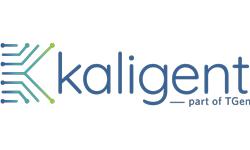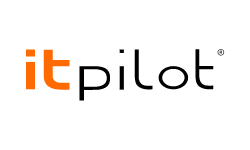Glimpse Enables DevOps Processes and Cuts Infrastructure Costs by 70% with phoenixNAP’s Managed Private Cloud (MPC)
Glimpse is an online membership platform that enables digital content creators to grow their subscription businesses. With the ability to set up multi-tier sponsorships, gate content, modify pricing on-the-go, and accept payments and tips directly from their fans, creators can generate consistent revenue streams. The tokenization system ensures higher revenue compared to many other similar platforms, making Glimpse a great choice for developing an online subscription-based business.
Dedicated to consistently improving the experience for content creators and consumers, Glimpse was looking to accelerate release cycles while ensuring error-prone deployment builds. The traditional ITSM setup with a centralized infrastructure and segregated Development and Operations teams was largely seen as inefficient for supporting these goals. To increase efficiency and ensure improved collaboration, the company decided to implement DevOps principles and technologies, which enabled it to code and roll out new features faster.
“The adoption of DevOps principles allowed us to collaborate more efficiently and improve the outcomes of our work. By providing us with critical IT resources, phoenixNAP’s Managed Private Cloud (MPC) helps us ensure streamlined, productive, and cost-efficient development.“
CHALLENGE
As a fast-growing company, Glimpse was looking for a way to optimize its IT infrastructure and development flow to ensure continuous iteration and accelerated release cycles. Recognizing the barriers of traditional ITSM settings, Glimpse decided to adopt DevOps tools and principles for improved IT efficiency. The specific challenges the company was facing include:
- Inefficient ITSM department settings
- Long release cycles (weeks, even months)
- High build failure rates
- Inability to code and innovate fast
The adoption of DevOps methodologies enabled Glimpse to address these challenges. As a set of rules, principles, and technologies, DevOps helps streamline Development and Operations tasks. Heavily focused on automation, DevOps practices rely on the use of APIs, containers, and Infrastructure as Code tools to ensure faster and error-prone deployments.
DevOps principles:
- Agility of teams and infrastructure
- Automation of testing and deployment processes
- Infrastructure as Code management
- Continuous Integration/Continuous Deployment (CI/CD)
To enable these principles in their organizations, Glimpse needed an IT infrastructure that could support their DevOps tools and technologies. They were looking for a solution that could be set up and scaled easily, while ensuring excellent performance. The availability of enterprise-grade IT resources on an opex-based model was another important requirement for the team, as they were looking to ensure cost-efficiency.
“We felt that traditional infrastructure could limit us in our effort to implement DevOps completely. We needed a high level of scalability as we were not sure at what rate the product will develop and we wanted to make sure we can scale easily in case of sudden spikes in demand.“
SOLUTION
In an effort to minimize infrastructure management bottlenecks and ensure maximum efficiency, Glimpse chose phoenixNAP’s Managed Private Cloud (MPC). As a highly customizable multi-tenant cloud platform, MPC enabled Glimpse to build an environment optimized to their specific needs. Available on an opex-model, MPC is cost-efficient and easy to scale, which provided Glimpse with the desired level of flexibility. MPC is fully managed by phoenixNAP’s IaaS specialists, who collaborate closely with the Glimpse team to ensure all of their needs are met. phoenixNAP’s global data center network further supports Glimpse’s goals of delivering an exceptional experience to its fast-growing community of content creators and consumers all over the world.
Key reasons for choosing phoenixNAP:
- phoenixNAP’s global presence made Glimpse application stack more resilient to failures.
- Infrastructure uptime and support by the phoenixNAP team met Glimpse’s requirements.
- The overall costs of MPC compared to a Public Cloud solution were 70% lower.
“phoenixNAP’s MPC was an ideal solution for us by all metrics. Our tests showed that it can deliver advanced level of performance at an affordable price point. For the same amount of money that we would spend on Public Cloud, we could get bigger VMs and better performance with phoenixNAP’s MPC. This cost-efficiency was one of the main reasons why we chose the platform.“
Implementing DevOps Tools and Processes on MPC
The high level of customization available with MPC enabled Glimpse to easily integrate it with DevOps tools and technologies. A fully automated workshop was customized to allow for turning the environment into Infrastructure as Code in a short time. Powered by VMware, MPC also enables easy Kubernetes integration, which are the foundation of Glimpse’s environment.
Creating a container-first environment
Glimpse’s core infrastructure heavily relies on VMware, as well as open-source tools and technologies such as GNU/Linux, PVE and Kubernetes. Its team has adopted a container-first policy to ensure fast deployments, increased portability of applications across servers, and greater overall efficiency when it comes to code changes and updates. Cloud-based services centered around Kubernetes such as Kube Prometheus Stack, Tiller, and EFK were also implemented for easier environment management and monitoring.
Infrastructure as code management
Using Terraform, a popular Infrastructure as Code tool, Glimpse facilitated management of all critical IT resources. Communicating with VMware vCenter API in MPC, Terraform is a comprehensive solution for managing different aspects of VMware environment such as IPs, compute resources, networks, and VMs. The integration between Terraform and MPC was enabled through an efficient collaboration of Glimpse and phoenixNAP teams.
Orchestration and management
After the environment setup, Glimpse team implemented Ansible for configuration management. Using YAML syntax for expressing its playbooks, Ansible is a simple and efficient tool for realizing or scaling Kubernetes cluster. Glimpse uses Docker, but is planning to switch to ContainerD, a lightweight replica of Docker in its Kubernetes cluster, but Ansible makes it easy to switch between the different options in several code commands. Before adding new compute nodes and performing upgrades, Glimpse first created a demo environment to test the configuration. All three phases – setup, upgrade, and test – were automated to streamline repetitive tasks.
Security Policies Setup and Key Management
Between the three levels of security for Kubernetes clusters recommended by Center for Internet Security (CIS) Benchmark – privileged, baseline/default, and restricted – Glimpse implemented the middle one (baseline/default). The recommended safeguards were automated through Ansible, where the needed configuration files were added to expose all elements and ensure the same security level is applied for every new cluster that is created. These security policies were also reviewed in collaboration with security specialists from phoenixNAP, who helped ensure proper implementation.
For key management, Glimpse is using Hashicorp Vault, which programmatically stores cryptographic keys, tokens, and secrets. In addition to that, Glimpse is also using Consul for distributed key-value storage.
Enabling CI/CD
As one of the pillars of DevOps methodology, Continuous Integration/Continuous Delivery (CI/CD) pipeline is key to ensuring development efficiency. To enable it, Glimpse is using Jenkins, which helps their 15 developers collaborate efficiently. Through programmatically coded pipelines, Jenkin does everything from the initial Git push and creating a Docker image to pushing code to production, which is an example of successful implementation of automation for faster development.
“We had an amazing collaboration with the phoenixNAP team when we first implemented MPC and this continued throughout the last few years since we were on the platform. We love the customization potential of the solution, as well as the fact that phoenixNAP team worries about certificates, alerts, monitoring etc. instead of us. The SLA was flexible and 100% reliable.“
BENEFITS
The flexibility of MPC allowed Glimpse to customize the platform to its needs and enable integration with various DevOps tools. As such, it provided a foundation for the Glimpse team to automate different IT processes for greater productivity and efficiency. This enabled it to accelerate its production and growth, as well as ensure flexibility in adapting to any emerging trends and requirements.
- Increased cost-efficiency compared to a public cloud solution.
- Higher development efficiency through automation of repetitive tasks.
- Improved agility through accelerated release cycles.
- Consistent performance, as Glimpse now has hosts running on MPC for over two years.
- Global availability through phoenixNAP’s global data center network.
- Efficient collaboration with phoenixNAP’s team on infrastructure deployment and management.
“Our team adjusted to the DevOps principles without difficulties. For them, working at Glimpse is just an IDE sitting on the desktop. We abstracted all the heavy infrastructure from them while they focus just on coding. This would not be possible without phoenixNAP infrastructure that sits at the core of all our strategies.“



